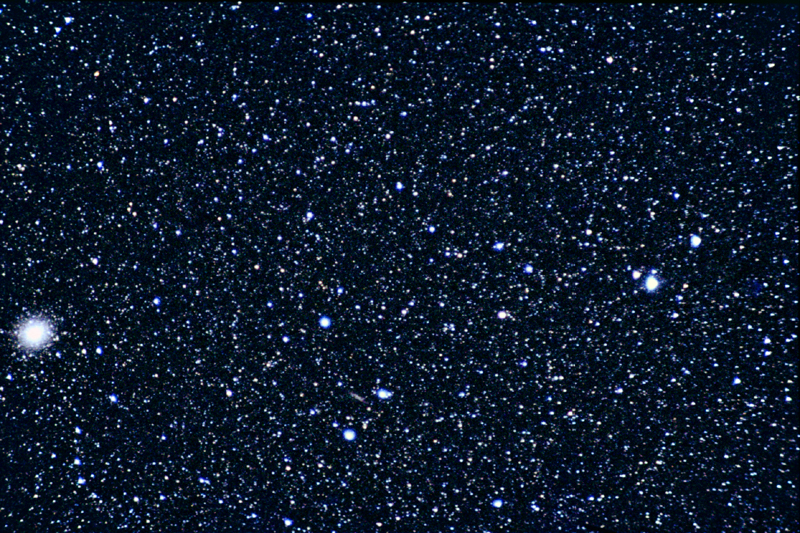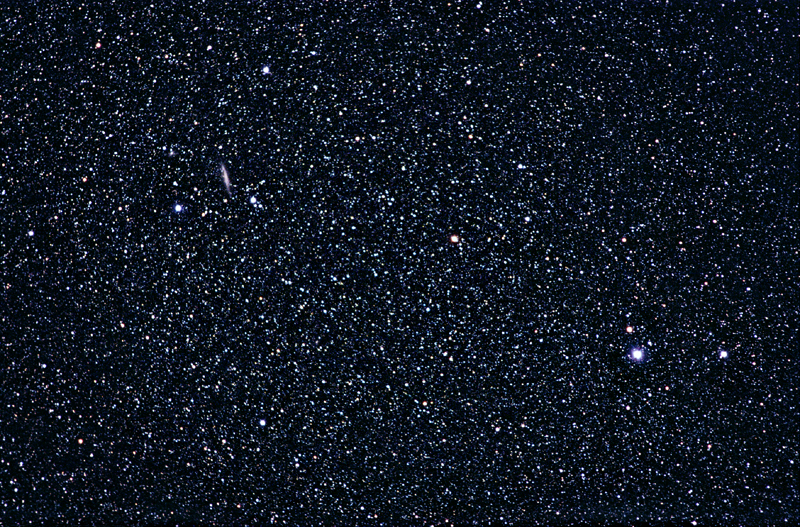
40 minutes exposure, Fuji Super HG II 400 film.
300mm f/2.8 Pentax lens.

A large and bright, edge-on spiral galaxy, NGC 4945 would undoubtably be much better known if it were situated further north. It is bright enough to be visible in binoculars, and in an 8" telescope it appears as a long, featureless patch of light. For southern observers, it is a very nice galaxy to observe.
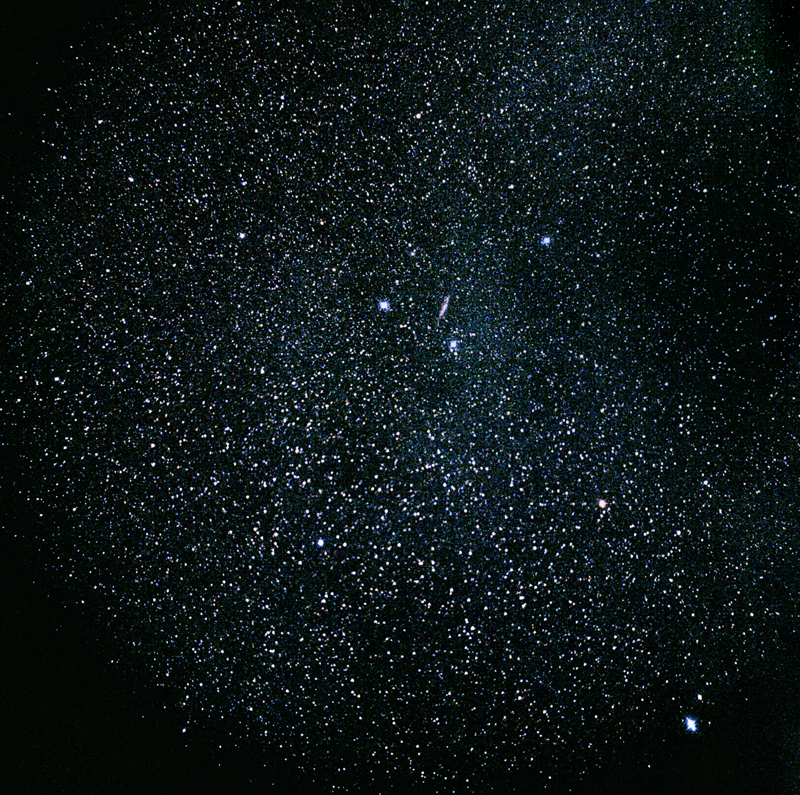
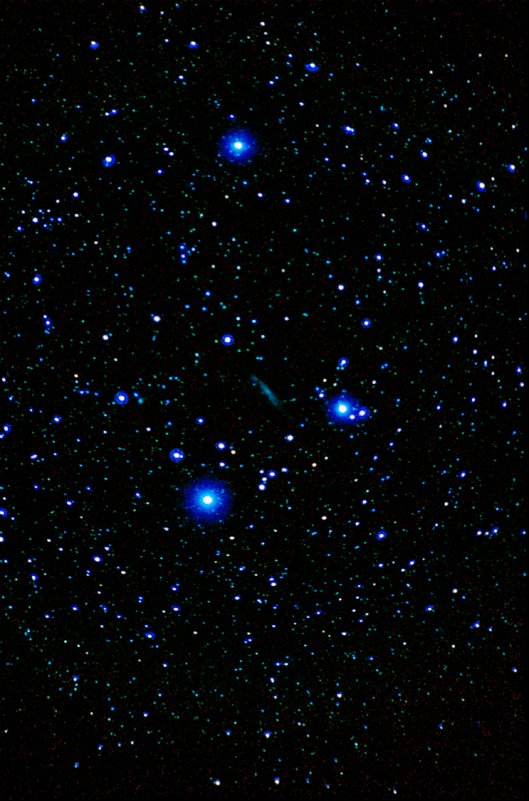
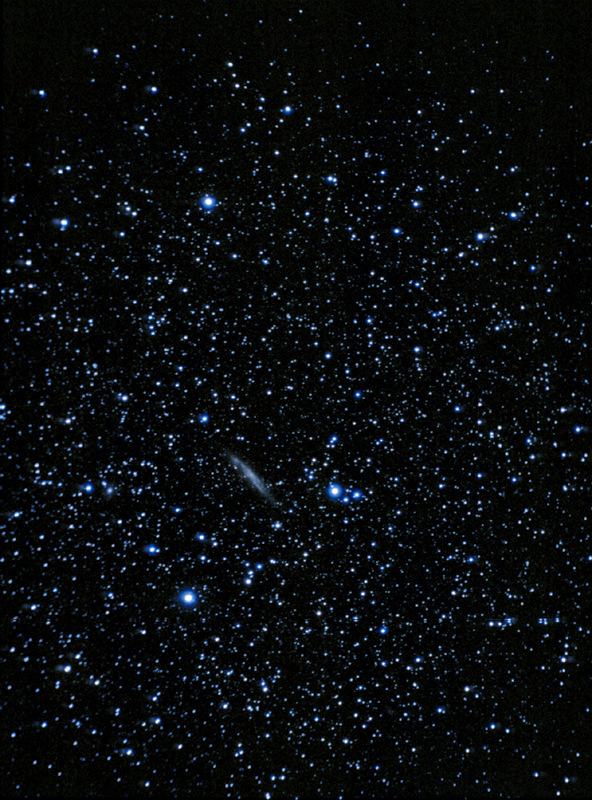
NGC 4945 is another galaxy that was a sourch of frustration for me. In the early 1990's I had photographed this galaxy. The resulting image was slightly trailed, but while examining it, I noticed that one trail seemed to be at a different angle to the rest. A quick check showed no known asteriod in the vacinity, and an extreme enlargement showed the trail to be a real object. However, at the Perth Observatory a short time afterwards, comparison with a deep photograph and an examination of the slide with a negative showed that the trail was a close pair of stars which had overlapped when they trailed. (mumble....mumble....mumble!!!)
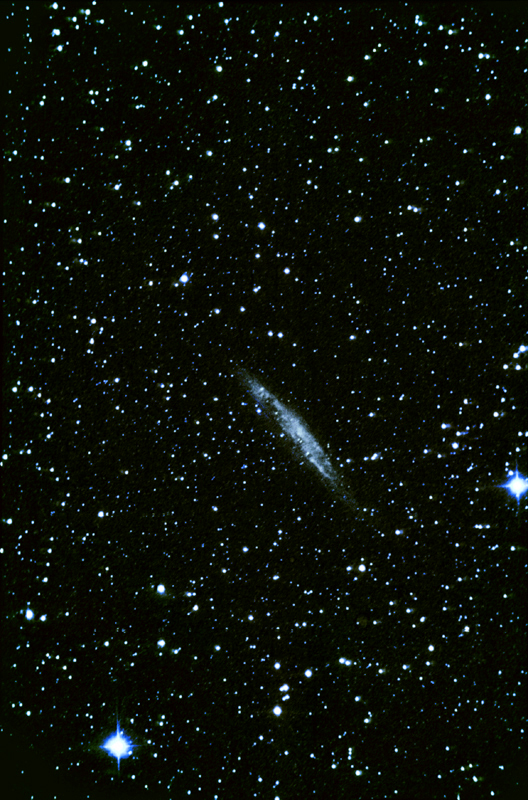
NGC 4945 is easily located as it is situated less than 10 degrees north of the Southern Cross. It is located inside a right-angled triangle of 4th magnitude stars about halfway between gamma centauri and Omega centauri, as visible in the photograph below.
